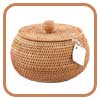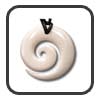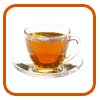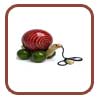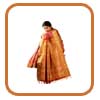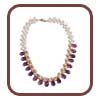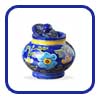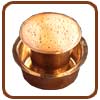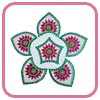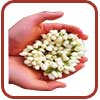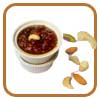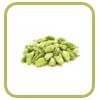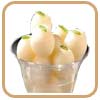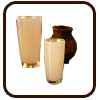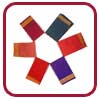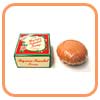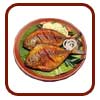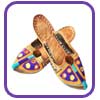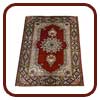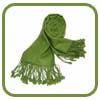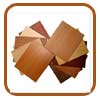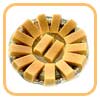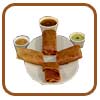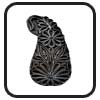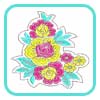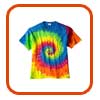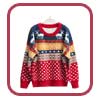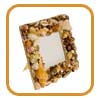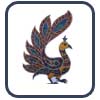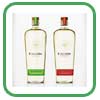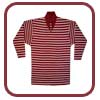-Tie and Dye is the process by which a fabric is dyed using a particular resist dyeing method. In this method the fabric or the material which has to be dyed is tied in a specific pattern and then binding it in place with rubber bands, clamps, or strings. Then the dye is applied to the fabric which binds to that portion of the material which is not held by string or rubber band because the banded area will not let that particular portion to be dyed thereby giving the fabric a specific pattern. It was quite popular in the 1960's subculture and now both the mainstream and sub- cultured people have a liking for the tie and dye fabrics. The tie and dye pattern is believed to have been introduced by the freewheeling Hippies who were always noted for their peace and music loving spirit in them.
 THE HIPPIES INTRODUCED TIE AND DYE IN AMERICA
THE HIPPIES INTRODUCED TIE AND DYE IN AMERICA
- The Hippies who introduced tie and dye in America in the 1960's wanted to escape from the harsh social norm of the 1950's and they found that this tie and dye method was a way to convey their free spirited attitude.The Hippies considered this as a simple and economical way of portraying their individuality while brightening up the world with unique and happy colors. Before tie-dye became popular, Rit Dye was struggling. It was marketed to a great extent in the Hippie areas so that they will come forward to use the Rit for tie and dyeing process. Later it was taken to fashion designers and editors who slowly started introducing the tie and dye pattern of dyeing. Soon tie-dye became a bandwagon the entire youth generation jumped on. But there are records in the history which states that the tie and dye was used even much before the Hippies.
 TIE AND DYE IN ANCIENT TIMES
TIE AND DYE IN ANCIENT TIMES
-It was used during the T'ang reign in China from 618 to 906 C.E. and in Japan during the Nara period which is between 552 to 794 C.E.The process of dyeing the dyeing the fabrics during ancient days was totally different where it involved extraction of natural dyes from different parts of the plant like flowers, berries, roots and leaves and then boiling them in hot water into which portions of cloth was dipped in different colors for a long time so that the dye gets steep into them. During the 15th century the tie and dye method which was followed was totally different and was known as Tsujigahana or flowers at crossing which used complicated stitches to outline the sections of the material which has to be dyed with separate colors.
 DURING GREAT DEPRESSION TIE AND DYE GAINED MORE POPULARITY
DURING GREAT DEPRESSION TIE AND DYE GAINED MORE POPULARITY-In the Tsujigahana method painting was also done on the material using an ink known as sumi ink which will help in darkening the applied than the surrounding fabric when it was dyed. This was totally different from the common method in which the colors were allowed to run together. During the period of the Great Depression in America, the tie and dye gained more popularity among the public because the government encouraged the people to be more economic by way of adding new colors to the old clothes. Pamphlets were handed out describing how to tie dye and use old cotton, flour, coffee, and sugar sacks to create new clothing and home decorations.
 THIS METHOD OF DYEING RESULTED IN RANDOM PATTERNS
THIS METHOD OF DYEING RESULTED IN RANDOM PATTERNS -But there are other statements which convey that tie and dye was not brought in by the Hippies of America but was formed in India, Japan and Africa even during the early 6th century. This method of dyeing the fabric was very popularly known as Bandhini in India which involved the technique of tying small pints of thread and dip-dying, resulting in designs featuring small dots. Indigo color was mainly used to dye the garments by the Japanese which were usually made of silk or hemp. This was known by the Japanese term Shibori that circumscribe an extent of resist-dyeing techniques which was used by people of different cultures. This method of dyeing resulted in random patterns that are either geometric or free flowing or a blend of everything in between.
 SPECIALTY
SPECIALTY -Even with the advent of trendy fashions in the textile and garment industry there is still a lot of demand for the bright and colorful patterns of the tie and dyed fabrics. Whereas some people still prefer garments of this pattern as matter of esteem paid to the people of 1960's subculture and their heed in the celebrities of that period. Still others opt for tie and dye just because of the skill involved with binding the material in such a way as to create a unique and intricate design with the tie-dye process. The process of tie and dye is not only attributed towards clothing but also on every type of textile product like bedding to furnishings and much more. The main feature of any type of tie and dye products is the bright colors used in this process.
 THE EFFECT OF BANDING THE MATERIAL TO CREATE AN INTRICATE PATTERN
THE EFFECT OF BANDING THE MATERIAL TO CREATE AN INTRICATE PATTERN -The effect of banding the material to create an intricate pattern typically leaves a �psychedelic� effect that has been associated with the Woodstock era of the late 1960's.The tie and dies method uses different kinds of dyes like household, fiber reactive, acid and even vat dyes. However in 1960's retail household dyes especially made by Rit was most commonly used in this technique. The main purpose of using different kinds of dyes in tie and dye is that it can be constructive on various fibers so that there is less chance to bleed and fade when compared to that of the original dyes produced for specific fibers. This forms the fundamental pink socks phenomenon which happens when fabrics dyed with mixed dyes are washed with other garments.
 THE ADVENT OF NEW DYES IN THE DYEING INDUSTRY
THE ADVENT OF NEW DYES IN THE DYEING INDUSTRY
-However after the advent of new dyes in the dyeing industry the most commonly used dye is the Procion MX fiber reactive dyes which is featured as effective on cellulose fibers such as cotton, hemp, rayon, and linen and these dyes also has the tendency to react with fibers at basic high pH, resulting in a wash fast and permanent bond. The main agent added to increase the pH and start the reaction is soda ash or sodium carbonate. This is either added directly to the dye or mixed with a solution of water in which garments are soaked before dyeing. The most safe and simple dye which is commercially used to dye cellulosic fabrics is Procion dyes. Acid dyes which are comparatively safe and simple are generally used to dye protein based fibers such as silk, wool, and feathers, as well as the synthetic polyamide fiber and nylon.
 DYES ARE VERY EFFECTIVE AT ACIDIC LOW pH
DYES ARE VERY EFFECTIVE AT ACIDIC LOW pH
-These dyes are very effective at acidic low pH, where they form ionic bonds with the fiber. When vat dyes are used because of its insoluble property they have to be chemically reduced before it is used as a dyeing agent. This reduction from insoluble to soluble state is achieved by heating the dye in a strongly basic solution of sodium hydroxide (lye) or sodium carbonate (caustic potash) containing a reducing agent such as sodium hydrosulfite or thiourea dioxide. The fabric which has to be vat dyed is soaked in the dye bath leading to the oxidization of the dye to its insoluble form which then goes for soaping especially to prevent the dye from rubbing off from the fabric. The different colors used in tie and dye process have various significances attached to it which was considered to a great extent in the middle ages. The dying of fabric has been used in several well known ritualistic aspects of ancient history.
 PROCESS OF TIE AND DYE
PROCESS OF TIE AND DYE
-The initial step involves the preparation of the dyeing surface with a protected work space. Usually before getting into action wear rubber gloves to prevent any chemical reaction and also wear dust masks to prevent breathing problem. The fabric which has to be dyed is washed with care to remove any grease or oil stained on it for it might interfere with the dye. The first step involves the preparation of the fixer water or the dye fixer, sodium carbonate which acts more like a laundry detergent or a strong soap. Once the dye fixer is ready the fabric is soaked in it for at least a minimum of 5 minutes or preferably overnight. This fixer water can be reused for several batches of fabric. Then the fabric is taken out of the dye fixer where the excess is squeezed back to the container for it can be re-used. Depending upon the wetness of the fabric the spreading of the dye takes place like when the cloth is wet then will make the dye spread in a feathery or marbled patterns.
 IN CASE OF DRY FABRIC THE SPREADING OF THE DYE IS LESS
IN CASE OF DRY FABRIC THE SPREADING OF THE DYE IS LESS
-Whereas in case of dry fabric the spreading of the dye is less. Thus the fixer wetness determines the different dye patterns. The wet fixed fabric is placed on the dyeing surface and then folded, twisted or tied as per wish. This is followed by the preparation of the chemical water in nearly 1 quart warm water by blending 3/4 cup Urea, 2 teaspoons Ludigol, and an optional 1 teaspoon Water Softener. It is to this chemical water that the dye powders or colours are added. The amount of the dye powder which has to be added is based on the requirement of how bright or light or pastel colour the dye colour has to be. For a very bright colour then nearly 4 to 6 teaspoons dye powder can be used and for a light colour 2 to 4 teaspoons dye powder and finally for a pastel shade only 1/4 to 2 teaspoons of dye powder can be used. The dye powder added should be stirred properly.
 ONCE THE DYE COLOUR IS READY THE FABRIC IS PLACED ON THE DYEING SURFACE
ONCE THE DYE COLOUR IS READY THE FABRIC IS PLACED ON THE DYEING SURFACE-Once the dye colour is ready the fabric is placed on the dyeing surface and the dye is applied to the fabric by squirting dye onto the fabric with a pipette, squeeze bottle, or other dye squirting tool. At this stage enough dye and all the colours has to be applied to the fabric to both sides. It has to be left tied and it is better to leave it for at least 12 to 15 hours so that it becomes very easy to wash out the loose dye and keep the colors from running. Now it is washed with cold water for a long time so that all the loose dye will come out of the fabric. After the hand wash it is always best to untie the fabric and then machine wash it with Synthrapol SP Detergent. Once this is done dry the fabric is dried as we dry normal clothes.
 ACCORDING TO THE LATEST TREND TIE AND DYE IS FOLLOWED
ACCORDING TO THE LATEST TREND TIE AND DYE IS FOLLOWED
-However according to the latest trend tie and dye is followed by preventing the dye from reaching some areas of the fabric while dyeing others by folding, tying, stitching, crumpling or otherwise preparing the fabric inhibits the flow of the dye to some areas.
Tie and dye fabrics and garments has come back with a trendy and glamorous outlook with latest geometric patterns like circles, squares, triangles, V-shapes suiting the contemporary fashion. Earlier it was only cotton which was used to tie and dye but now it has come up with other materials like Chiffon, silks, georgettes, satin, jute, etc.This type of dyeing is even done on jumpsuits, kaftans, tunics, shrugs, sarongs and bikinis. Digital prints have taken over manual processing. The major problem faced by the tie and dye industries is the labor shortage.
 TAMILNADU IS THE BIG HUB FOR TIE AND DYE INDUSTRIES
TAMILNADU IS THE BIG HUB FOR TIE AND DYE INDUSTRIES -Erode a small town in the state of Tamil Nadu is a big hub for tie and dye industries. Though the local market for the tie and dye products is not in demand but still the trade is export-driven and the two main international summer markets are America and European countries. Pollution is also another problem faced by the tie and dye units for they fall under �orange� category classification of the Tamil Nadu Pollution Control Board that mandates them to go in for treatment facilities. Thus the people associated with this industry state that the bigger units are able address the pollution problem whereas the smaller ones are finding it very difficult leading to a number of units being closed.
They also state that these units can do well provided there is an increase in demand from the domestic market and when the government assists them in controlling the pollution problem. Tie and dye kits are available in all supermarkets and some of the good brands are Jacquard, Dylon, Tulip, and Rainbow Rock. These tie dye kits range from 700 INR to 1500 INR.
 DEALERS OF TIE AND DYE PRODUCTS
DEALERS OF TIE AND DYE PRODUCTS
| 1. A ONE HANDICRAFTS,
5, Gopal Bari Jagatpura Road, Jaipur, Rajasthan, India
|
| 2. MADHAV INTERNATIONAL,
No. RZ-54, Chandan ColonySadulajab, Neb Sarai Road, P.O.Mehrauli, NEW DELHI, India
|
| 3. LAXMANS ART EMPORIUM,
N-3/65-3 S, Karmajitpur, Near Ganesh Dham Colony, Newada, Varanasi, Uttar Pradesh, India
|
| 4. REVIVE TEXTILE & JEWELS,
F-44 Royal Plaza, Central Spine, Vidyadhar Nagar, Jaipur, India
|
| 5. BHAGYODAY FASHIONS
,203 Mall, 21 Opp. Rajmandir Cinema, Bhagwan Das Road, C-Scheme, Jaipur, Rajasthan, India
|
| 6. ATITH INTERNATIONAL,
B-148, First Floor, Lajpat Nagar 1st, New Delhi, India
|
| 7. La Colors
G-02, C-Block, Shalimar Garden, Extn-2, Shalimar Garden, Shahibabad, Uttar Pradesh, India
|
| 8. PEARL FASHIONS,
202 CHANDERLOK COTTAGE, NR POST OFFICE, O T SECTION, ULHASNAGAR, Maharashtra, India
|
| 9. INCREDIBLE ATTIRE,
15, GANESH VIHAR, MUKUNDPURA ROAD, BHANKROTA, Jaipur - 302026, Rajasthan, India
|
| 10. Sejal exports,
7/17, A GOLD FIELD HEIGHTS, SION BANDRA LINK ROAD, KALAKILLA, Mumbai - 400017, Maharashtra, India
|
 HISTORY OF TIE AND DYE BUY TIE & DYE T-SHIRTS
HISTORY OF TIE AND DYE BUY TIE & DYE T-SHIRTS  THE HIPPIES INTRODUCED TIE AND DYE IN AMERICA
THE HIPPIES INTRODUCED TIE AND DYE IN AMERICA TIE AND DYE IN ANCIENT TIMES
TIE AND DYE IN ANCIENT TIMES DURING GREAT DEPRESSION TIE AND DYE GAINED MORE POPULARITY
DURING GREAT DEPRESSION TIE AND DYE GAINED MORE POPULARITY
 THIS METHOD OF DYEING RESULTED IN RANDOM PATTERNS
THIS METHOD OF DYEING RESULTED IN RANDOM PATTERNS SPECIALTY
SPECIALTY THE EFFECT OF BANDING THE MATERIAL TO CREATE AN INTRICATE PATTERN
THE EFFECT OF BANDING THE MATERIAL TO CREATE AN INTRICATE PATTERN THE ADVENT OF NEW DYES IN THE DYEING INDUSTRY
THE ADVENT OF NEW DYES IN THE DYEING INDUSTRY
 DYES ARE VERY EFFECTIVE AT ACIDIC LOW pH
DYES ARE VERY EFFECTIVE AT ACIDIC LOW pH PROCESS OF TIE AND DYE
PROCESS OF TIE AND DYE IN CASE OF DRY FABRIC THE SPREADING OF THE DYE IS LESS
IN CASE OF DRY FABRIC THE SPREADING OF THE DYE IS LESS ONCE THE DYE COLOUR IS READY THE FABRIC IS PLACED ON THE DYEING SURFACE
ONCE THE DYE COLOUR IS READY THE FABRIC IS PLACED ON THE DYEING SURFACE ACCORDING TO THE LATEST TREND TIE AND DYE IS FOLLOWED
ACCORDING TO THE LATEST TREND TIE AND DYE IS FOLLOWED TAMILNADU IS THE BIG HUB FOR TIE AND DYE INDUSTRIES
TAMILNADU IS THE BIG HUB FOR TIE AND DYE INDUSTRIES DEALERS OF TIE AND DYE PRODUCTS
DEALERS OF TIE AND DYE PRODUCTS



